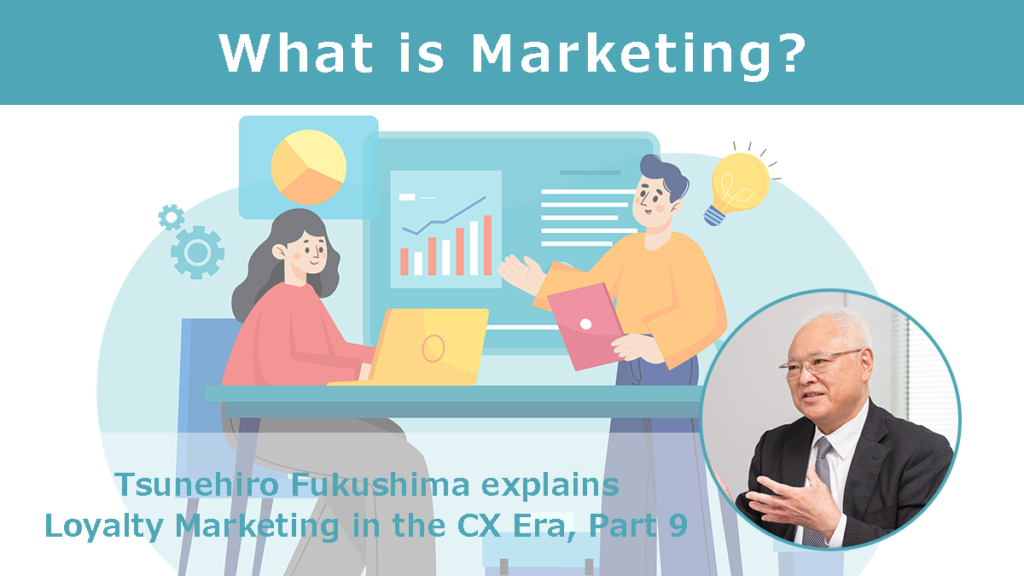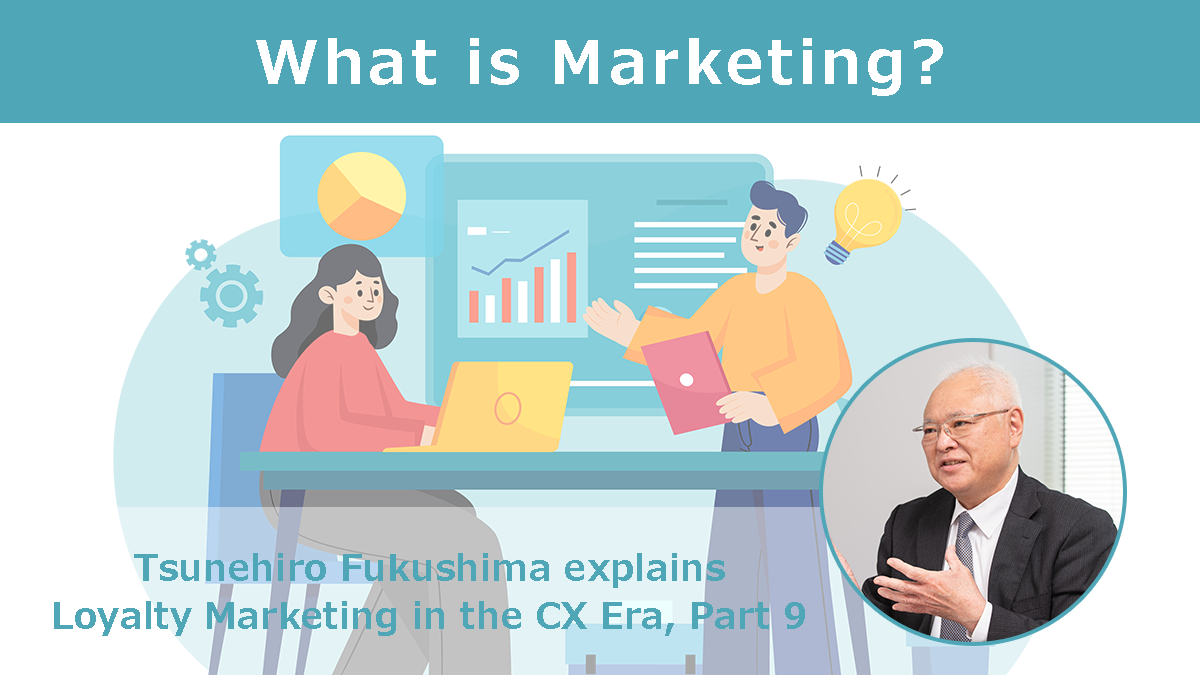What is marketing? This is a philosophical question. The Japan Marketing Association defines marketing as “comprehensive activities for market creation conducted by companies and other organizations from a global perspective, through mutual understanding with customers and fair competition.”

Contents
What is the definition of marketing?
When I explain marketing, I always speak of “sampo yoshi =good for everyone,” which is said to be the concept of the Omi merchants, as the definition of marketing. In other words, “good for the buyer, good for the seller, and good for the world.” This is definitely the concept of marketing. The basic idea is that marketing is an exchange of value, an economic activity using money. Companies and customers are exchanging value. This concept is very important.
For example, suppose a manufacturer purchases raw materials for 50 yen, processes them for 50 yen, and sells them for 50 yen. If the manufacturer can make a product that customers are willing to pay 500 yen for, he can sell it for 400 yen. If the product sells for 400 yen, the cost is 100 yen, so the manufacturer makes 300 yen. The customer pays only 400 yen for something worth 500 yen. This is an exchange of value. It is an exchange of value in which both parties have a surplus, i.e., both parties benefit. The customer’s surplus is called “Consumer Surplus” and the producer’s surplus is called “Manufacturer Surplus”.
What is even more important in marketing is that it is an economic activity involving money. Anything that does not involve money does not usually come under marketing. There are exceptions, but for example, volunteer work and community welfare generally do not fall into the category of marketing. There is a field called non-profit marketing, which covers such areas but also considers the degree of people’s happiness in terms of monetary units. Thus, marketing is based on the value of money, and barter is not a marketing target.
The essence of marketing remains the same
Marketing is a methodology for managing the “processes and functions” that make this activity of value exchange efficient and smooth. The essential aspects of marketing have not changed over the ages. However, methods and indicators have changed and will continue to change due to technological innovation and other factors.
For example, with everyone having a smartphone and being online all the time, social networking services and word-of-mouth sites have become widespread, and the number of points of contact between companies and their customers has exploded. In addition, sales channels that were once centered on retailers have since shifted to mass merchandisers, and now to e-commerce.
The flow of information itself has also changed dramatically. Information that used to be uniformly and unilaterally provided by companies to their customers is now diffusely reflected among customers through social networking services. Therefore, it has become impossible for companies to control information.
Advances in AI will lead to more and more personalization and recommendations in various industries in the future. I believe that clothing stores will no longer have pre-made sizes and that all clothing will be made to fit each body type.
What is MarTech?
Let’s not forget MarTech either. MarTech, as Kotler also uses in Marketing 5.0, is a term coined by combining Marketing and Technology, enabling companies to incorporate AI and robots into their marketing activities to make them faster and more effective. It has begun to be used in the U.S., but I believe it will attract worldwide attention in the future.
What is H2H Marketing?
H2H marketing is also important. The idea of Human to Human Marketing is that both the company and the customer empathize with each other through their personalities. Addressing social issues such as sustainability and emphasizing the human aspect of marketing will become increasingly important.
What is Brand Activism?
Related to this, Brand Activism is another concept that should be kept in mind. Activism is the effort to promote changes in society but justice marketing, in other words, is becoming a question of justice in marketing. The high ethical standards of the younger generation are a trend seen around the world and is a topic that needs to be addressed in marketing. Environmental activist Greta Thunberg has been in the news for some time, and we need to consider marketing that emphasizes the high ethical standards found in Generation Z, such as sustainability, diversity, and equality.
Finally, I will summarize recent changes in marketing, so please take this as a hint for your future marketing.
Marketing Goals Shift from Customer Satisfaction to Loyalty
The first major change was the goal.
In the past, customer satisfaction (CS) was considered the most important indicator in marketing, and the goal was to increase CS. Today, however, the goal has shifted to the creation of loyalty (empathy).
CS is about satisfying customers by having them pay to buy your products. Loyalty is different from that; it is really about becoming a fan of the product. And the methodology for achieving this is changing from 4P promotion to CX. Mass advertising used to be the mainstream, but now it has diversified to include digital, in-store experiences, SNS, and blogs. We are shifting to improving the quality of each of the infinite number of points of contact between customers and companies = improving CX.
Tsunehiro Fukushima will direct your marketing efforts
At transcosmos, we offer marketing strategy proposals in line with the 5A concept advocated by Philip Kotler. For actual proposals, Tsunehiro Fukushima, the commentator of this article, supports loyalty marketing optimized for the digital age. First of all, please tell us your company’s concerns.
Tsunehiro Fukushima
Corporate Executive Officer, transcosmos inc.
Director, Japan Marketing Association
After completing graduate studies at the Tokyo Institute of Technology, he joined Ajinomoto Co., Inc. He then worked for GE Capital, Mitsubishi Corporation, Gurunavi, Inc., and Medical Data Vision Co., Ltd., where he served as head of big data business and marketing. His areas of expertise include new business and new product development, brand theory, medical business, and loyalty marketing. At transcosmos, he is in charge of marketing-related business development and is the exclusive provider in Japan of the 5A diagnosis introduced in the book “Kotler’s Marketing 4.0”.

